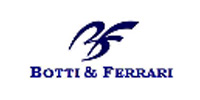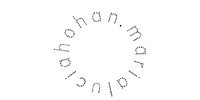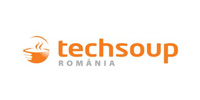The image of a sandwich is lacking distinctive character
An application for the following figurative mark filed for meat, sausage, bratwurst in class 29 and bread, rolls, pastry; buns covered with bratwurst; mustard; sauces, (seasoning) in class 30 was rejected based on lack of distinctive character.
 The Board made reference to the existing case law according to which account must be taken of the fact that the perception of the average consumer is not necessarily the same in relation to a three-dimensional mark consisting of the appearance of the product itself as it is in relation to a word or figurative mark consisting of a sign which is independent of the appearance of the products it designates. Average consumers are not in the habit of making assumptions about the origin of products on the basis of their shape or the shape of their packaging in the absence of any graphic or word element, and it could therefore prove more difficult to establish distinctive character in relation to such a three-dimensional mark than in relation to a word or figurative mark. In those circumstances, only a mark which departs significantly from the norm or customs of the sector and thereby fulfils its essential function of indicating origin is not devoid of any distinctive character for the purposes of Article 7(1)(b) of the EUTM Regulation [Mag Instrument v OHIM, paragraph 30; Deutsche SiSi-Werke v OHIM, paragraph 28, and Storck v OHIM, § 27].
The Board made reference to the existing case law according to which account must be taken of the fact that the perception of the average consumer is not necessarily the same in relation to a three-dimensional mark consisting of the appearance of the product itself as it is in relation to a word or figurative mark consisting of a sign which is independent of the appearance of the products it designates. Average consumers are not in the habit of making assumptions about the origin of products on the basis of their shape or the shape of their packaging in the absence of any graphic or word element, and it could therefore prove more difficult to establish distinctive character in relation to such a three-dimensional mark than in relation to a word or figurative mark. In those circumstances, only a mark which departs significantly from the norm or customs of the sector and thereby fulfils its essential function of indicating origin is not devoid of any distinctive character for the purposes of Article 7(1)(b) of the EUTM Regulation [Mag Instrument v OHIM, paragraph 30; Deutsche SiSi-Werke v OHIM, paragraph 28, and Storck v OHIM, § 27].
Moreover according to the settled case law the appearance of a product serves functional or aesthetic requirements rather than as pointer to the commercial origin of the goods. Thus it is necessary to examine whether, in light of the overall impression conveyed by the combination of its shape, its colours and its graphic element, the mark applied for could be perceived by the relevant consumer as an indication of its commercial origin.
In the current case the Board considered that although the mark was filed as a figurative mark this is actually a natural reproduction of the overall composition of a sandwich that fails to meet the distinctive character requirements of a mark. While it may be true that there are no pictures on the internet of a star-shaped bun filled with meat or sausage, according to the sustaining of the applicant, the requirement under Article 7(1)(b) is to establish the existence of the distinctive character not the novelty as required while examining patent or design applications. The Board also denied that the remarkable peculiarities of the form of the sandwich will be understood as an indication of the origin of the goods. The Board held the consumer is merely informed how the goods are to be consumed or what would be the possible use of this product as an ingredient in the final result. Neither the star form of the bread, nor the (asserted) circular shape of the sausage are sufficiently specific and arbitrary characteristics, capable of attracting the attention of the average consumer of the claimed goods.
Number “1000” is consisting exclusively of indications with respect to the characteristics of the protected goods
The mark consisting in the word reference “1000” was registered for pneumatic paint spray guns (airbrush guns) in class 07. Against the mark an invalidation action was filed based on the provisions of article 57 Article 7(1)(b) of the EUTM Regulation. It led in particular that the sign has a descriptive character since the indication “1000” is used as a reference to the capacity of the color container of a paint spray gun, the operating pressure of the paint spray gun or the viscosity of the color to be used.
Based on the settled case law In order for a trade mark to be refused under Article 7(1)(c) of the EUTM Regulation, it is not necessary that the signs and indications composing the mark that are referred to in that article actually be in use at the time of the application for registration in a way that is descriptive of goods or services such as those in relation to which the application is filed, or of characteristics of those goods or services. It is sufficient that such signs and indications could be used for such purposes. A sign must therefore be refused registration under that provision if at least one of its possible meanings designates a characteristic of the goods or services concerned. [C-191/01 P, Doublemint § 32]
It is also irrelevant for the purposes of determining whether this ground for refusal applies whether or not there are synonyms permitting the same characteristics of the goods or services to be designated or whether the characteristics of the goods or services which may be the subject of the description are commercially essential or merely ancillary. Any undertaking must be able freely to use such signs and indications to describe any characteristic whatsoever of its own goods, irrespective of how significant the characteristic may be commercially.
In the case at issue the Board found that for the application of Article 7 (1) (c) of EU Regulation it is not required that the relevant traffic circles know exactly how the claimed goods function but it is sufficient that the mark could describe a characteristic of such goods. As also acknowledged by the appellant the operating pressure is an essential criterion for the acquisition of color spray guns and paint spray guns are available on the market even at a pressure of 6000 psi. It is also not relevant that the pressure specification (“psi”) is missing. Consequently it concluded that regardless of the type of used technology the sign “1000” will be perceived prima facie at least by a part of the relevant consumers as a description of the pressure regardless of whether they are the general public or skilled workers.
JUST SOCKS not sufficiently distinctive for hosiery
The expression in combination with a design was filed for Clothing, footwear, headgear, hosiery in class 25 and retail and wholesale services, including by mail order and via the Internet, in relation to clothing, footwear, headgear, hosiery in class 35 and partial rejected for clothing, hosiery and corresponding services.
The Board has taken into consideration while examining the appeal the settled case law that establishes that examination of applications for registration must not be minimal but must be stringent and full in order to prevent trade marks from being improperly registered and to make sure that, for reasons of legal certainty and sound administration, trademarks whose use could be successfully challenged before the courts are not registered. Provisions of article 7 (1) (c) EUTM Regulation apply only for trademarks which are immediately descriptive however it is not required that the mark in question is already used as descriptive element but it is sufficient that such use may be reasonable expected for the future. Therefore it is not necessary for the examiner to prove that the phrase concerned is commonly used in the course of trade.
The fact that the trademark consist of the word combination “just socks” does not alter the descriptive character. The term “just” will be simply understood as an indication that the company applies the mark only for such goods and services. Moreover the used graphic is not sufficient to create a distinctive ensemble.





















